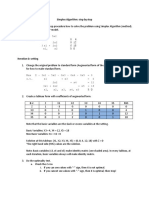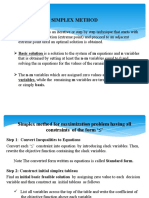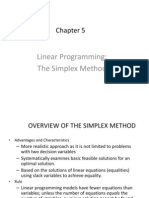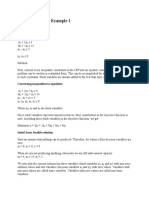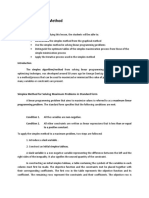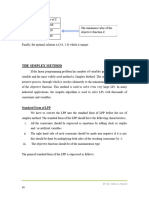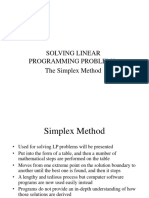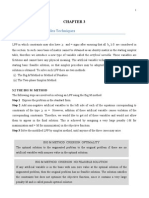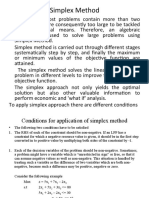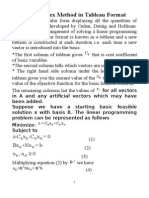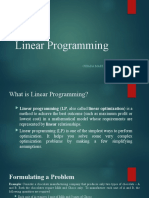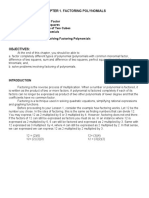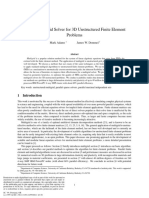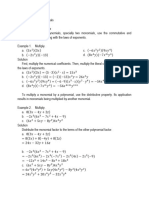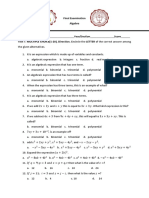0% found this document useful (0 votes)
46 views30 pagesLecture 9 - Introduction To Simplex Method
The document provides an overview of the Simplex algorithm, a widely used method for solving linear programming problems, introduced by George B. Dantzig in 1947. It details the iterative process of moving between vertices of a polytope to find the optimal solution, including initialization, optimality tests, and the criteria for entering and leaving variables. Additionally, it presents examples and key points to remember when applying the Simplex method.
Uploaded by
nuur aliCopyright
© © All Rights Reserved
We take content rights seriously. If you suspect this is your content, claim it here.
Available Formats
Download as PPTX, PDF, TXT or read online on Scribd
0% found this document useful (0 votes)
46 views30 pagesLecture 9 - Introduction To Simplex Method
The document provides an overview of the Simplex algorithm, a widely used method for solving linear programming problems, introduced by George B. Dantzig in 1947. It details the iterative process of moving between vertices of a polytope to find the optimal solution, including initialization, optimality tests, and the criteria for entering and leaving variables. Additionally, it presents examples and key points to remember when applying the Simplex method.
Uploaded by
nuur aliCopyright
© © All Rights Reserved
We take content rights seriously. If you suspect this is your content, claim it here.
Available Formats
Download as PPTX, PDF, TXT or read online on Scribd
/ 30

